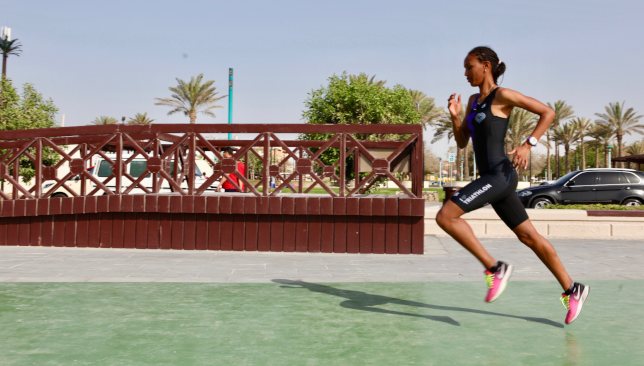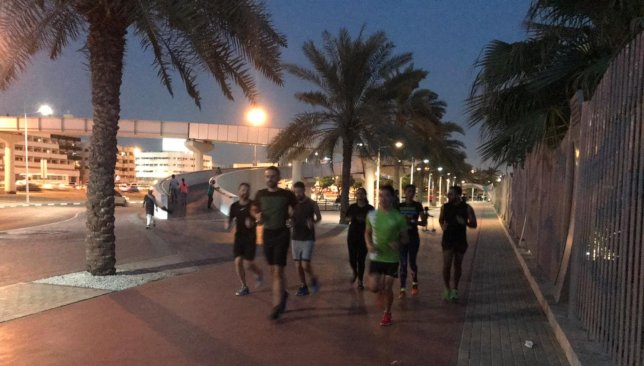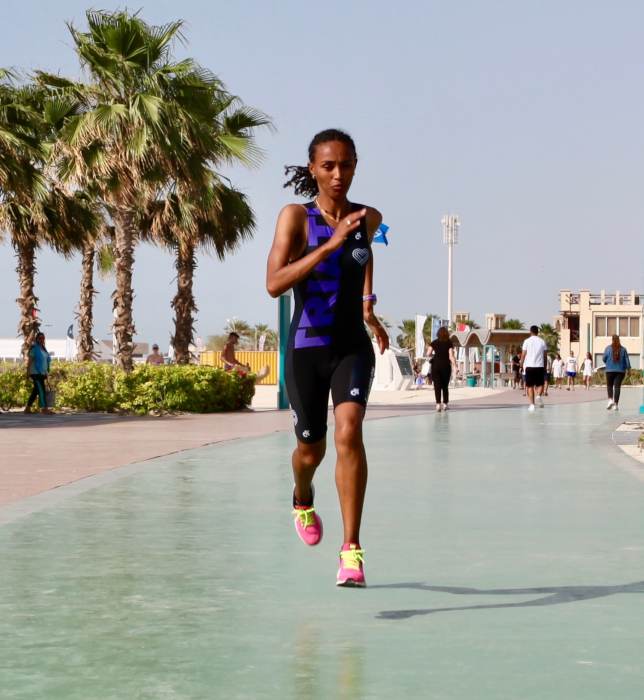
Sport360°’s Chris Bailey has signed up for the challenge of his life in November – an Ironman. Follow his adventure as he prepares his body for a 2.4-mile swim, 112-mile cycle and a marathon to finish … check out part 1, part 2 and part 3 if you haven’t already.
Living in Dubai is a blessing in many ways, but this Ironman-in-training is in danger of melting.
Since the summer has thrown a blanket of heat over the country, running sessions will soon ‘boil’ down to two choices: the tedious treadmill or training at ungodly hours.
My body struggles with water retention at the coldest of times so, with just four weeks to go until I hit up my first Ironman 70.3 in Staffordshire, the treadmill and I are going to become increasingly familiar.
The problem is, there are only so many podcasts or playlists you can listen to before your ears tap out. The solution? To tap into the knowledge of I Love Supersport Dubai.
ILSS Dubai’s premier running coach is Ethiopian Fanos Tekle, who has won more than 30 international races in her career to date and can run 10km in about 35 minutes.
As it sounded like she knew a thing or two about forward motion I moseyed on down to Zabeel Park one evening, where ILSS regularly hold running workshops for budding or improving runners.
I arrived complete with heart rate monitor, fitness watch, electrolytes and gritted teeth ready to be taxed – instead it was rather relaxed. The workout consisted of short and sharp exercises which, while intense for 30 seconds or so, was conducted at a pace where technique took precedence.
TWIST AND SHOUT
High knees, hip twists, star jumps, skipping with jumps and all manner of exercises designed to stretch and flex the body.
The point of all this? To get each part of your body working in harmony. While running may feel like the most natural thing in the world – we start to run almost as soon as we learn to walk – there is a big difference between plodding along and propelling yourself forward.
You may have bumped into older runners whose knees are suffering from the strain, but incorporate drills into your routine and there is nothing to stop you from being sprightly for decades.
I put some of my new-found knowledge to the test during the Run The Track Night Run at the Dubai Autodrome for a hot and humid 10km complete with a rather intimidating hill.

LONG, HARD YARDS
In truth coach Dmitriy has been helping me lay the groundwork for months. Long and easy runs at no more than 75 per cent of maximum heart rate to get the miles in but not wear out the body. 100m and 200m sprints, with proper warm-ups and cooldowns, to get my body used to running at more intense speeds. Incline work on the treadmill to tone up the leg muscles.
Which is why despite the hot and humid conditions (and the 60k bike ride the morning of), I felt strong during the race. With Dmitriy having set target heart rates every 3k or so, I was never at a pace where I was gasping for breath.
Now, clocking in at a time of one hour and two minutes didn’t send the speed guns smoking. In more pleasant conditions though sub one hour would have been mine – and there weren’t even any grumbles from the body the following day.
Perhaps I’ll survive this thing in November after all.
COACH’S CORNER
Fanos Tekle – ILSS Dubai running coach

Our main aim in our running groups and private sessions at I Love Supersport Dubai is to help runners achieve their goals without injury.
We help people train to finish a 10km race, half-marathon and marathon or set new personal best times.
Running more does not necessarily make you a better runner – that’s only one part of it. Doing strength training and drills are important to increase coordination and flexibility of the body. People who have too little of either have a high risk of injury, and they are wasting energy that they need to use for running forward.
Beginner runners can also make mistakes by doing the wrong type of training – mostly because they don’t know how to manage the pace and go too fast. Running three times a week is good enough for beginners, they need to run for just a short duration and focus on base training.
To get better the quickest way, find your main weakness and work more on it. Train continuously for three to six times a week, but in a regime that includes more running drills and strength work.
I Love Supersport Dubai is the premier international endurance sports school. No matter your age or ability, achieve your goals as a swimmer, runner, cyclist and triathlete under the tutelage of some of the region’s best coaches. Visit dubai.ilovesupersport.com for more details.